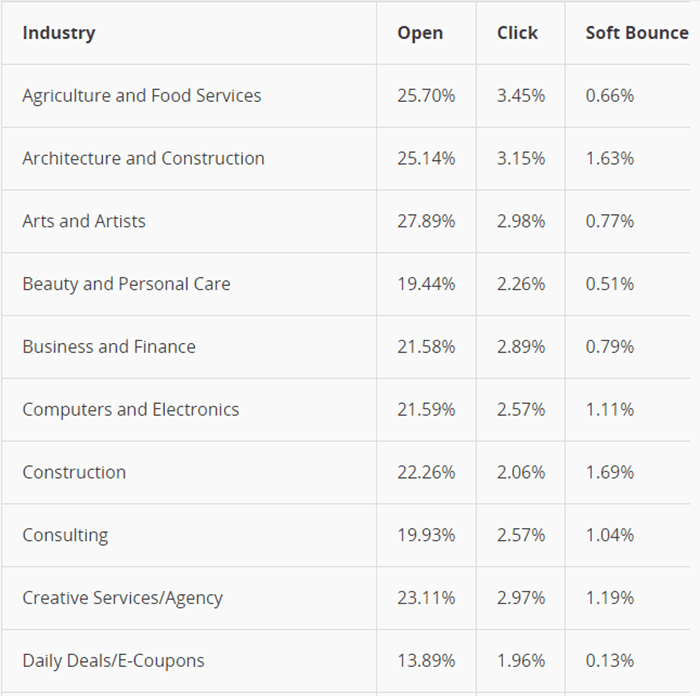Avoid these 7 mistakes at all costs when building and managing your sales funnel
Your sales funnel is the core of your marketing plan. It's the map of a customer's journey, right from the first interaction with your brand all the way to the final sale. Every piece of content you create and every marketing strategy you implement is built around your sales funnel.
In short, your funnel is a critical component that decides your online success. And unfortunately, you could be screwing it up.
In this post, we'll explore 7 of the most common mistakes that plague sales funnels, plus strategies you can apply to overcome each error.
1. You're not tracking enough data
A lot of marketers focus only on the big-picture metrics like page views, visitor-to-customer conversion rate, and bounce rate. Whereas, metrics with smaller scopes—like return visitors, exit pages, and scroll patterns—remain totally ignored.
This is a fatal mistake. Even though big-picture metrics are doubtless important to your sales funnel, the smaller metrics frequently provide much more actionable insight into how you can improve your sales funnel.
For instance, say that your overall traffic conversion rate currently sits at 1%. This is the big picture: 1 out of every 100 of your visitors eventually becomes a customer. Although this metric does give you a broad view of what's happening on your site, it doesn't show you specific areas of your marketing strategy that need improvement.
Now let's say that you go back over your sales funnel armed with a fine-tooth comb. You discover that out of every 100 visitors, 5 end up as email subscribers (5% visitor-to-subscriber conversion rate). However, out of those email subscribers, only 10% regularly open the emails you send.
This low open rate definitely needs work. According to MailChimp, open rates are typically >20% across the board in most industries.

Thanks to this relatively small metric, you now know a specific area in your marketing strategy that needs improvement. If you had focused only on the big-picture metrics, then it's possible that you might have never noticed this loss.
How to fix this
Make sure that you're focusing as much on small-picture metrics as you are on the broader ones. If your current analytics platform doesn't allow you to drill down into the metrics behind each step of your sales funnel, then consider changing over to one that does.
2. You're not testing multiple payment gateways
One of the trickiest parts of building a sales funnel is choosing the right type of payment gateways. The ideal payment methods in the real estate industry, for example, are often very different to those that work best in the Ecommerce industry.
Another problem you have to deal with is selecting the right number of permitted payment gateways. Too few and your sales funnel won't be able to accommodate a part of your audience. Too many, and you could end up scaring away some leads because of the excess choice.
How to fix this
The solution is continual testing. Test various combinations of different types and numbers of payment gateways until you find one that works well for your target audience. Here's a short list of some of the most popular e-payment gateways to get you started:
3. You're not prioritizing lead nurturing
Another common mistake in sales funnels is too much focus on lead generation, and too little on lead nurturing.
When lead generation is the sole focus, then a low lead-to-customer conversion rate is guaranteed to follow. You might have a lot of new leads entering the top of your funnel, but only a very small portion of them will ever make it all the way through and become customers.
How to fix this
Use marketing automation tools like content segmentation to ensure that all of your new leads are drip-fed content personalized to their demographics and tastes. Also, consider using lead scoring to evaluate the contacts that are most ready for the sale and move them along the pipeline accordingly.
4. Your copy sells features, not solutions
I recently came across an excellent quote from copywriter Konrad Sanders.

This tip could be the best one I've ever read on copywriting. When selling a product, the worst possible thing to do is to try to sell it to your audience by the merits of its features. Your customers don't want to know about features: they want to know about solutions. The copy's focus, then, should instead be on the problem your product solves for customers.
How to fix this
Every customer who's ever bought your product did so in order to solve a problem. Survey your current customer base to understand exactly what that problem is. Identify the most common pain points of your customer's experience, then write your copy around that information.
5. You haven't removed buyer inhibitions
Simply put, buyer inhibitions are the things that stop a lead from becoming a customer. Inhibitions are the fears that every customer has about buying a new product or hiring a new service.
Here are a few examples of common fears:
- How do I know I can trust this company to deliver on its promises?
- How do I know this product is the right fit for my specific needs?
- Does this company have a proven track record of success?
If you don't take away these fears, then a large percentage of your leads will never make it through your sales cycle.
How to fix this
Information is key here. If you haven't noticed, a common trend among the fears I just listed is when the lead doesn't know something. Take the first fear, for instance: "how do I know I can trust this company to deliver on its promises?"
This fear deals with trust. Leads who have this inhibition aren't sure whether they can trust your business with your money and they have been provided no information to alleviate this psychological block.
One common way to solve this fear is to use trust symbols and social proof. A trust symbol is a visual signal that communicates trust to viewers, such as a McAfee "secured" badge.
Baymard Institute recently did a survey to discover which trust symbols are preferred by consumers. Norton and McAfee logos came out on top.

Trust symbols aren't the only way to remove buyer inhibitions. Client logos are widely used to build social proof and relieve buyer anxiety. In addition, case studies that show leads exactly how your past customers have benefited from your business can also work to increase conversion rates.
6. You're using the wrong CRM
One prevalent mistake marketers make when maintaining a sales funnel is choosing the wrong CRM to manage their contacts. It's important that you choose carefully. To achieve the right results with your sales funnel, you need to make sure you're using the right technology.
Too often, though, I've seen marketers directly go in for whatever tool is the hottest on the market, or whatever tool they've already heard about from friends or from the blogs they frequent. Once they go in for a CRM without researching all of the available tools in detail, the inevitable result is a waste of time and resources as they endeavor to adapt their sales funnel to their CRM (it should be the other way around).
How to fix this
If your CRM isn't working out for your marketing strategy, then it might be time to change. Here are a few important factors to keep in mind when choosing the right CRM.
Price creep: A majority of CRM tools will charge you according to the number of contacts in your system. While the beginning plan may not be expensive, down the road you might find yourself in a position where you'll have a much larger number of leads in your system. Make sure that your budget will be able to accommodate the higher prices if/when that happens.
Flexibility: Different CRM solutions come packaged with different functions. The CRM you choose should have the flexibility to fulfill all the functions your sales funnel will require.
Data tracking: If you're not interested in using a third-party analytics platform, then make sure you find a CRM that offers built-in tracking so you're aware of all vital metrics.
Onboarding: Consider how much time it will take you to get used to your new CRM. Also think about the onboarding process and how the tool provider works with new customers to ensure they're making the most out of the platform. Some tools levy a mandatory kickstart fee (Infusionsoft, for example, charges $1499 to new accounts).
7. Your marketing and sales departments aren't working together
The biggest screw-ups in sales funnels often result from marketing and sales departments that aren't working together as they should.
Here's what typically happens: marketing focuses on generating as many leads as it can to hand off to the sales department. Sales complains that marketing focuses on lead quantity, not quality, and refuses to work with what they deem to be low-quality leads. Marketing protests this, saying that sales isn't doing their job, and sales responds in kind.
The whole process results in a lot of needless friction between the two departments that engenders revenue loss. This is a very unfortunate problem, especially when you consider that both marketing and sales have the exact same end goal: more revenue.
How to fix this
The best way to resolve interdepartmental disputes starts with discussion. Sit marketing and sales down together, and start talking things over.
The first thing you'll want to do is to agree on a common definition of a quality lead. Let both your marketing and your sales guys come up with a set of guidelines/criteria that each lead must meet. That way, marketing knows exactly the type of lead sales needs to produce conversions, and can plan accordingly.
Next, discuss strategies to generate and nurture these leads. Only when everyone is on the same page strategy-wise can marketing and sales truly be aligned and working in tandem.
Wrapping Up
While it may take you both time and resources to work out all the kinks in your sales funnel, the end result is definitely worth it in the long run. A solid, well-organized sales funnel is the core of every online business: a vital cog without which all marketing strategy is doomed to failure.

Thanks to
Jonathan John for sharing their advice and opinions in this post. Jonathan is a
freelance writer and a digital marketing enthusiast, helping businesses leverage the power of content marketing to increase website traffic and boost brand authority. You can follow him on
Twitter or connect on
LinkedIn.






 Thanks to
Thanks to 


